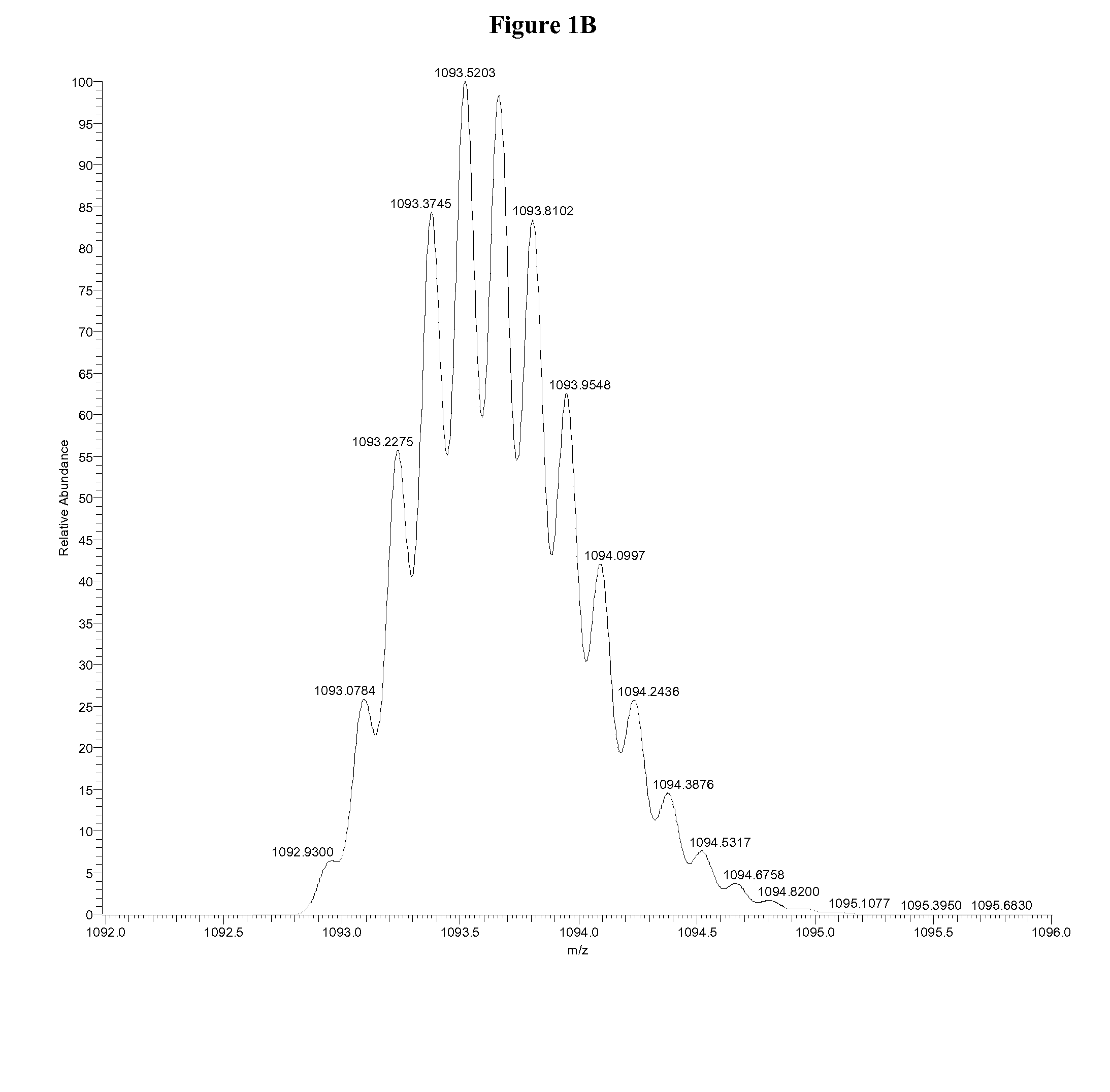Quantitation of insulin by mass spectrometry
a mass spectrometry and quantitative measurement technology, applied in the field of quantitative measurement of insulin, can solve the problems of diabetes mellitus and major public health problems, and achieve the effect of high resolution/high accuracy and high resolution/high accuracy
- Summary
- Abstract
- Description
- Claims
- Application Information
AI Technical Summary
Benefits of technology
Problems solved by technology
Method used
Image
Examples
example 1
[0158]Mock serum samples containing various amounts of insulin were prepared by spiking human insulin in mock serum (40 mg / mL Bovine Serum Albumin (BSA) in Phosphate Buffered Saline (PBS) buffer with 0.002% protease inhibitor AEBSF) at various concentrations for assessment of linear response (discussed below in Example 4).
[0159]Human insulin was also spiked in double charcoal stripped serum obtained from Golden West Biologicals, Inc. at various concentrations to assess linearity of response (discussed below in Example 4).
example 2
Enrichment of Insulin Prior to Mass Spectrometry
[0160]Sample injection of the above prepared human insulin-spiked mock and stripped sera was performed with a Cohesive Technologies Aria TX-420 system using Aria OS V 1.6 or newer software.
[0161]75 μL samples were introduced into a Waters Oasis HLB (25 μm, 2.1×20 mm), on-line solid phase extraction (SPE) column. The SPE column retained human insulin while letting other serum proteins and large molecules flow through.
[0162]The insulin was eluted off the extraction column with 0.2% formic acid in 40% acetonitrile and onto the analytical column (monolithic C18 analytical column from Phenomenex Inc. (5 μm particle size, 50×2.1 mm)). An HPLC gradient was applied to the analytical column, to separate insulin from other analytes contained in the sample. Mobile phase A was 0.2% formic acid in water and mobile phase B was 0.2% formic acid in acetonitrile. The HPLC gradient started with a 28.5% organic gradient which was ramped to 37% in approxi...
example 3
pH Effect on Ionization of Insulin
[0164]Ionization of insulin was conducted with an ESI source in positive ion mode. While using this ionization source to generate positive insulin ions, it was observed that the pH of the electrospray carrier solution affected the quantity and identity of the insulin ions generated.
[0165]Under acidic conditions, multiply charged insulin ions were observed with m / z of 968.5±0.50 (for the 6+ ion) and 1162.3±0.50 (for the 5+ ion). An exemplary spectra collected from ionization of insulin under acidic conditions is shown in FIG. 3A.
[0166]Under basic conditions, multiply charged insulin ions were observed with m / z of 1163.0±0.50 (for the 5+ ion) and 1453.8±0.50 (for the 4+ ion). An exemplary spectra collected from ionization of insulin under basic conditions is shown in FIG. 3B.
[0167]Sufficient signal was generated under both acidic and basic conditions that quantitative analysis could be conducted under either condition.
PUM
| Property | Measurement | Unit |
|---|---|---|
| collision energy | aaaaa | aaaaa |
| collision energy | aaaaa | aaaaa |
| particle diameter | aaaaa | aaaaa |
Abstract
Description
Claims
Application Information
 Login to View More
Login to View More - R&D
- Intellectual Property
- Life Sciences
- Materials
- Tech Scout
- Unparalleled Data Quality
- Higher Quality Content
- 60% Fewer Hallucinations
Browse by: Latest US Patents, China's latest patents, Technical Efficacy Thesaurus, Application Domain, Technology Topic, Popular Technical Reports.
© 2025 PatSnap. All rights reserved.Legal|Privacy policy|Modern Slavery Act Transparency Statement|Sitemap|About US| Contact US: help@patsnap.com



